Concept
For my project, I hope to create a floral composition with lights incorporated. Flowers and trees, especially ones made up of unnatural materials, have always interested me greatly and held a ethereal feeling of beauty. I want to encapsulate that feeling through this art piece.
Inspiration
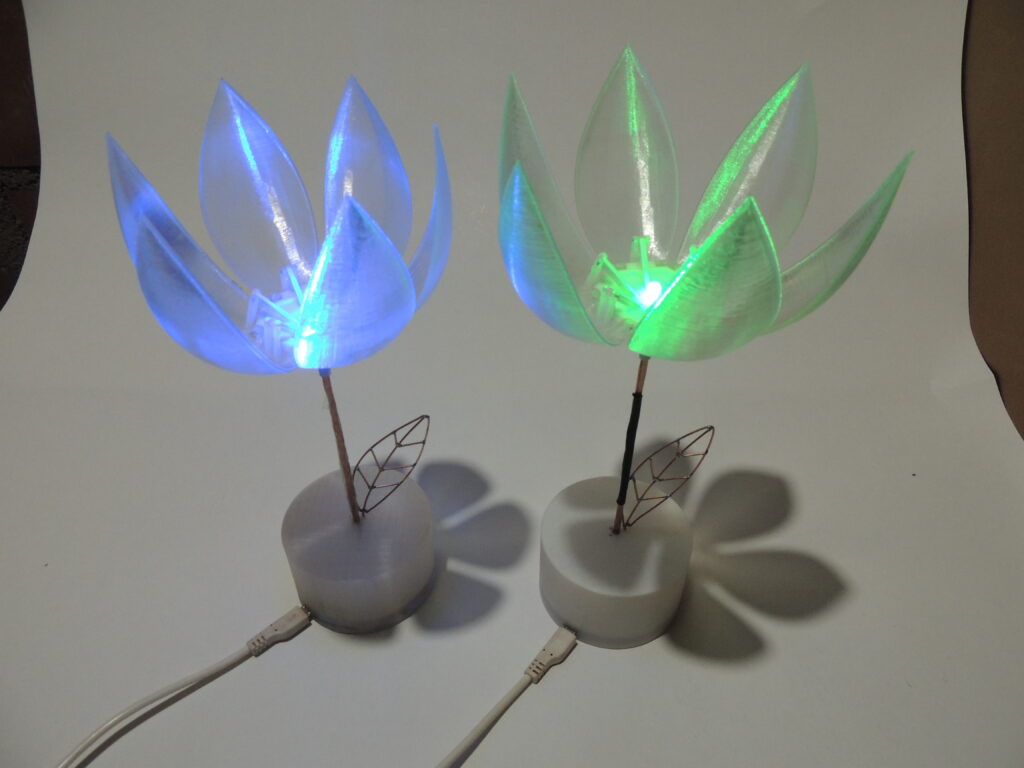

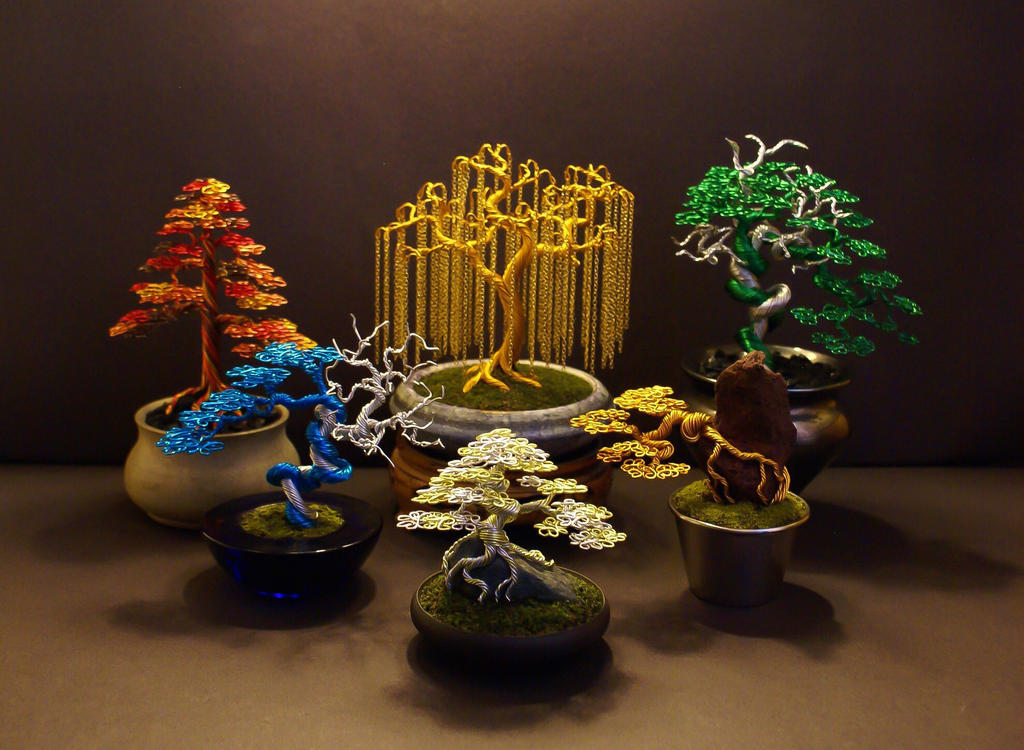
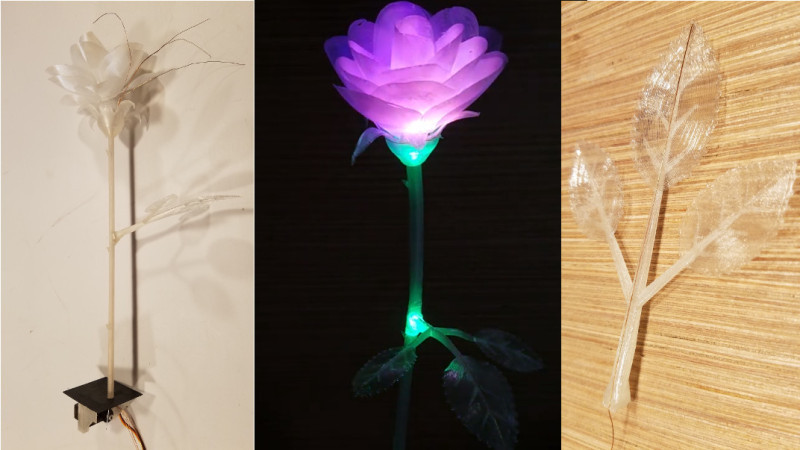
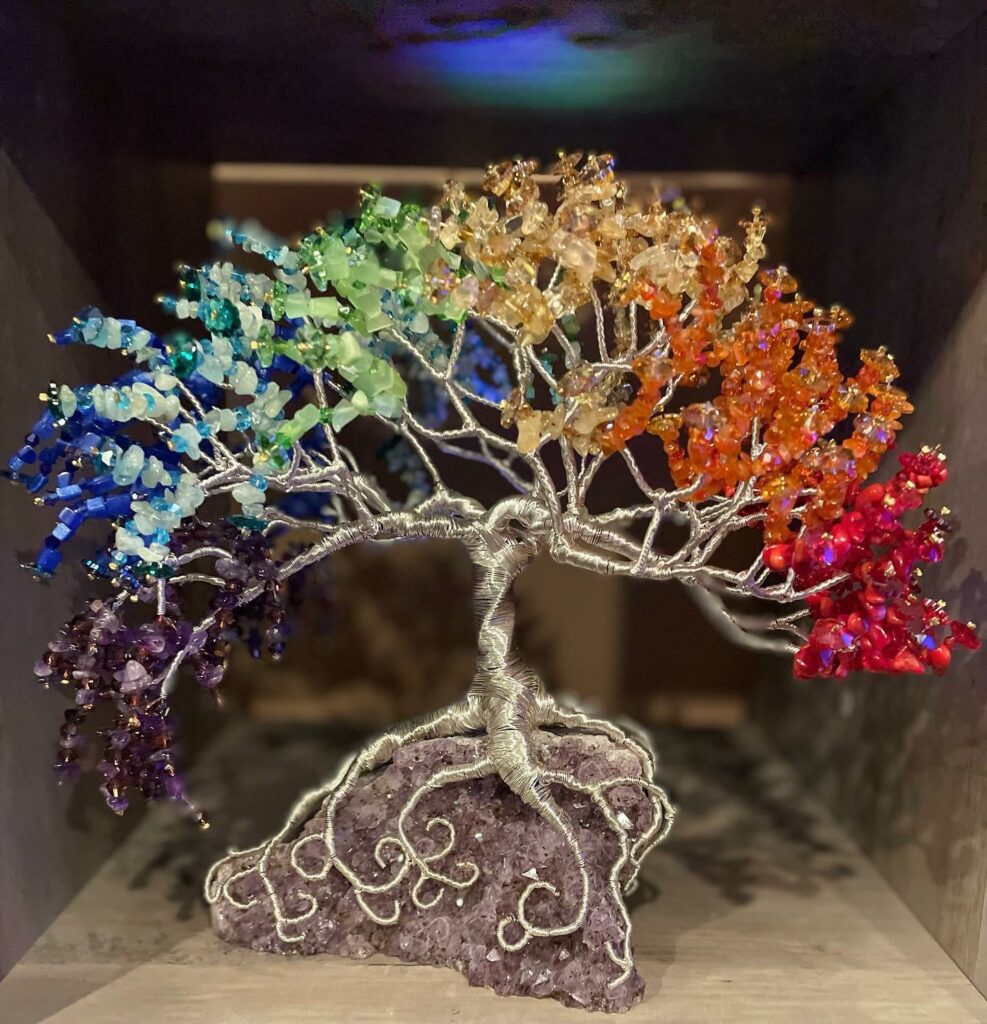
Main Concept – Glowing Garden
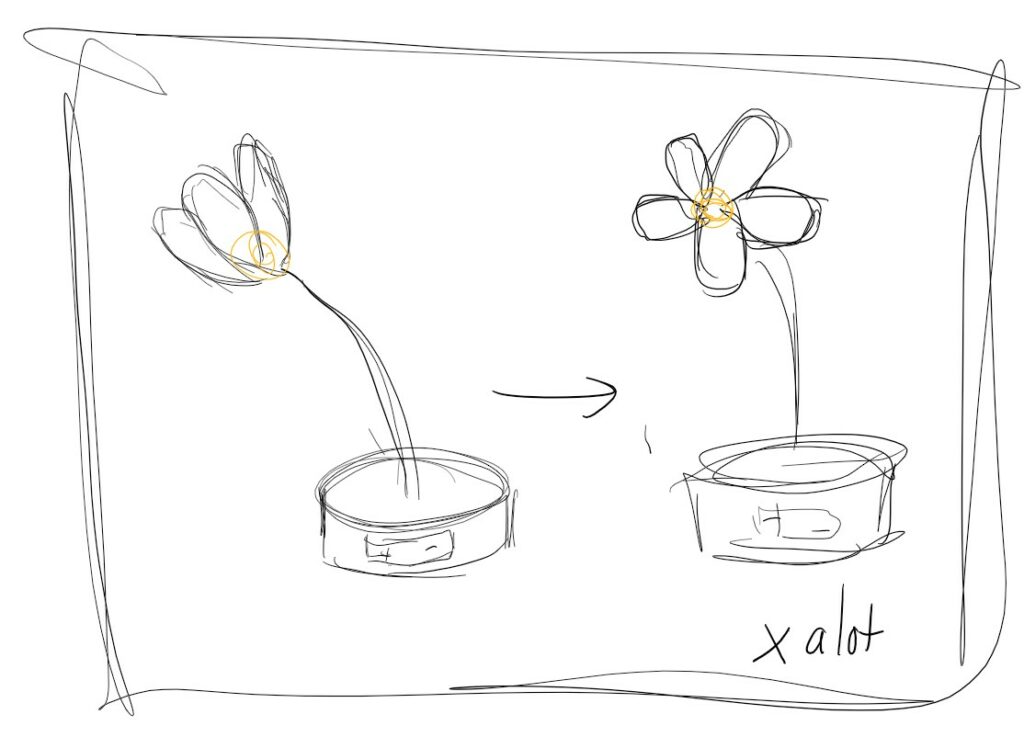


I want to create a “garden” of sorts, with individual plants that react dynamically to passersby by lighting up and potentially mechanically moving as well. Ideally these would be placed along a walkway in a line such that each plant would light up and dim as a person walked passed.
Additional – Wire Tree
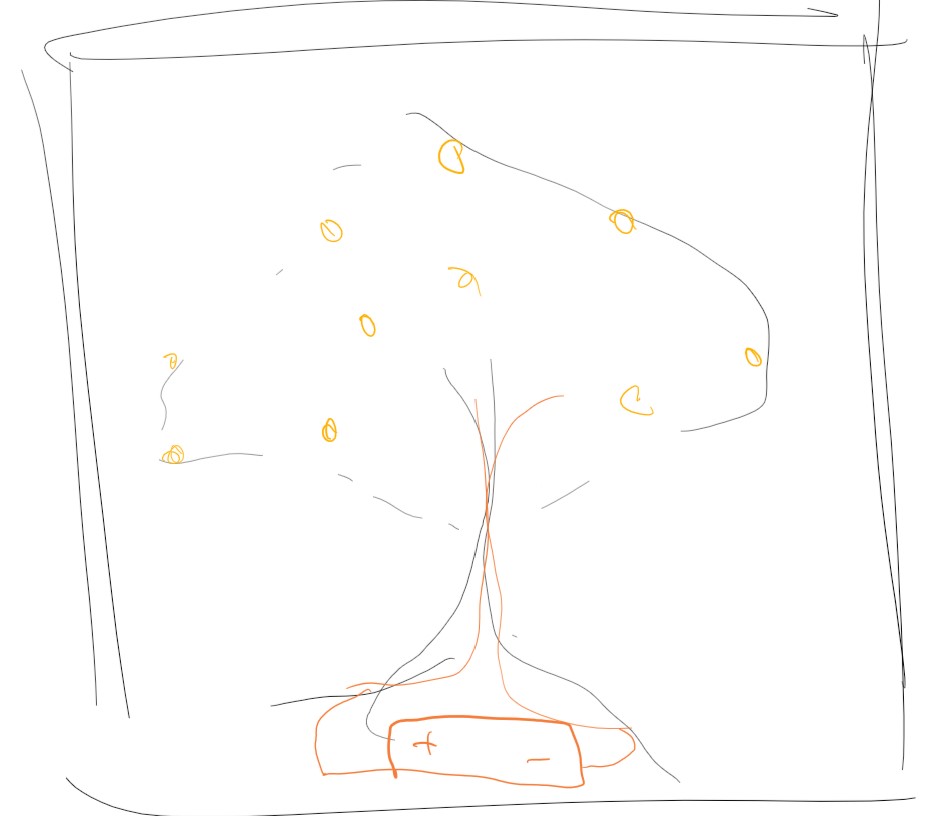
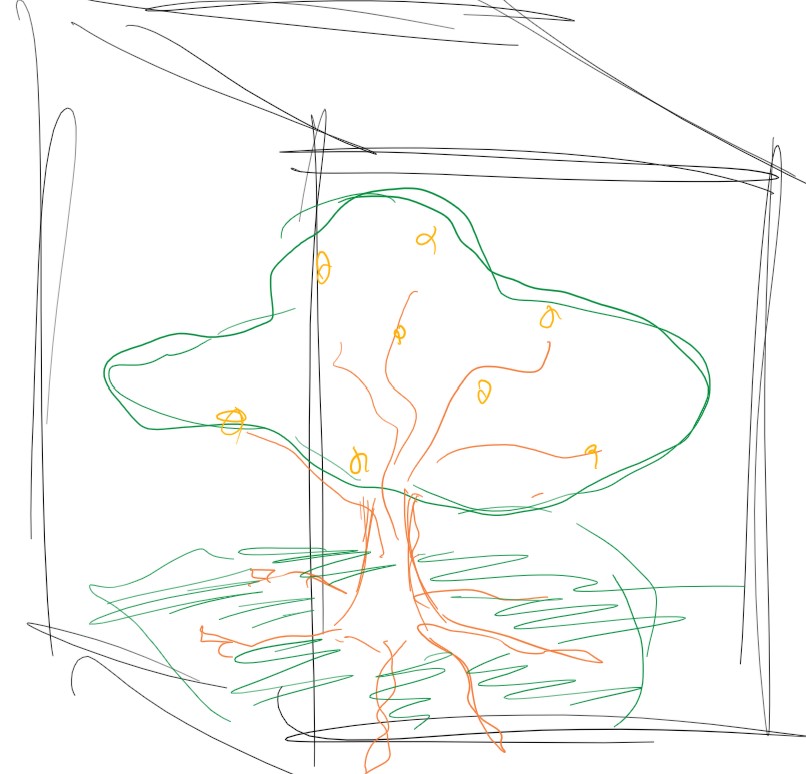
I love the way wire can be used to represent nature, and wire trees show that the best in my opinion. The way the wire is wrapped shows the lines and flow of the branches, and foliage can be so vibrant in comparison to the shiny wire. I would love to incorporate these pieces into the artwork.

LEDs can be added to the ends of branches to create the glowing effect, and wires can run along the trees trunk to enhance the lines of the tree.
Materials
I am uncertain as to what material I will use currently, but options include plastic, glass, resin, or paper. I currently have a strong interest in resin, which with a bit of coloring can illuminate beautifully. However, french beaded flowers, made of glass beads, also glow very well when light passes through. Lastly, plastic can give the opaque look while still diffusing the color, however I am unsure as to where I would acquire this type of plastic, much less be able to mold it. Paper would not hold up well to elements, but is likely the cheapest option.
Artist Questions
- Any suggestions on materials?
- Suggestions on incorporating sensors into the piece?
- At what scale should this project be?
- How many plants?
- How many types of plants?
I love this idea. I am a big fan of flowers and I think that a lighted garden is gong to be so beautiful. I think that there is a variety of materials that you could use depending on your price range and how much time you have. Tissue paper flowers are so pretty and would diffuse light super well. Thin acrylic is easy to cut with a laser cutter and can be heated up and bent. If you get neon acrylic, it can cast some super cool shadows and can also be layered to get a mix of colors. I feel like sensor could work at the base of the bulb or the stem depending on what you want the flower to sense and how you want it to move. And in terms of scale, I always recommend starting small and working up if you have more time. You could start with two types of flowers and the tree. If you find that you have more time, add another flower.
So, I didn’t get the chance to ask you Thea, how big is this garden going to be? You know if you want to make something big you should really simplify the amount of work it takes to make 1 flower, something something missing the forest for the trees. My only advice would be to try to keep them simple, especially if you want to have a wire tree be the center point of the whole thing.
With that cryptic warning out of the way I think this piece will be one of, if not the most, surrealist pieces that the class produces and I am all for it, your telling me I can go on a nature walk and not worry about bugs, that’s awesome. Honestly, I would enjoy a variety of plants if you be willing to make them (I am thinking Magnolias or Coral Bells could be really cool and simple to make).
That’s the big question. If I make the flowers I want them to be around the size of real flowers. However wire trees are pretty small, or take more skill than I currently have to make at a larger scale.
Thanks for the flower suggestions, I love the way they look!
Both are fantastic ideas and will both turn out really beautiful. Also, if you are having trouble deciding you could consider combining these ideas. Take the singular tree, but have it dynamically reacted to the room via sensors for light, proximity, or sound.
I love the intricacy and detail in the concept! An idea that might look nice is to use the twisted wires as current carrying and signal wires for the LEDs. The main (uninsulated) wires could be ground, with other winding wires that are insulated with different colors to signify power/signal.